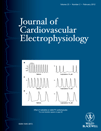Mechanical Esophageal Displacement During Catheter Ablation for Atrial Fibrillation
No disclosures.
Abstract
Esophageal Deviation in AF Ablation. Objective: To determine the feasibility and safety of esophageal displacement during atrial fibrillation (AF) ablation, to prevent thermal injury.
Background: Patients undergoing AF ablation are at risk of esophageal thermal injury, which ranges from superficial ulceration, to gastroparesis, to the rare but catastrophic atrioesophageal fistula. A common approach to avoid damage is luminal esophageal temperature (LET) monitoring; however, (1) temperature rises mandate interruptions in energy delivery that interrupt workflow and potentially decrease procedural efficacy, and (2) esophageal fistulas have been reported even with LET monitoring.
Methods: A cohort of 20 consecutive patients undergoing radiofrequency (RF) (16 patients) or laser balloon (4 patients) ablation of AF under general anesthesia. After barium instillation, the esophagus was deviated using an endotracheal stylet placed within a thoracic chest tube. LET monitoring was used during catheter ablation. Upper GI endoscopy was performed prior to discharge.
Results: At the pulmonary vein level, leftward deviation measured 2.8 ± 1.6 cm (range: 0.4–5.7) and rightward deviation 2.8 ± 1.8 cm (range: 0.5–4.9). The temperature rose to >38.5 °C in 3/20 (15%) patients. In these 3 patients, there was an average of 2 applications/patient that recorded temperatures >38.5 °C. No patient had a temperature rise > 40 °C. Endoscopy revealed no esophageal ulceration from thermal injury in 18/19 (95%) patients; the sole patient with a thermally mediated ulceration had an unusual esophageal diverticulum fully across the posterior left atrium. Twelve patients (63%) exhibited trauma related to instrumentation with no clinical sequelae.
Conclusions: Mechanical esophageal deviation is feasible and allows for uninterrupted energy delivery along the posterior wall during catheter ablation of AF. J Cardiovasc Electrophysiol, Vol. 23, pp. 147-154, February 2012)




